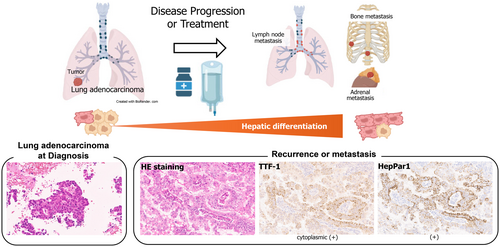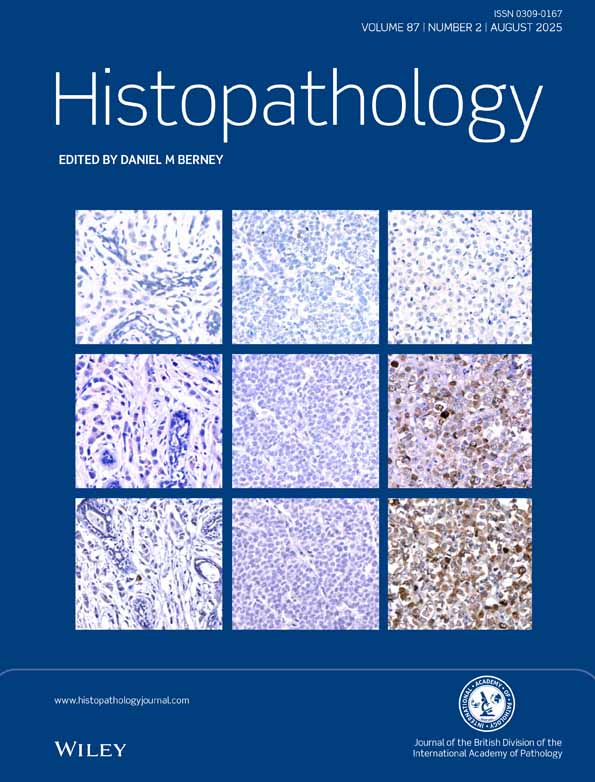Dynamic nature of hepatic differentiation in lung adenocarcinoma
Abstract
Aims
Hepatic differentiation in lung adenocarcinomas, including hepatoid adenocarcinomas, is rare. We encountered a case of lung adenocarcinoma with distinct cytoplasmic TTF-1 expression, which is characteristic of neoplastic and non-neoplastic hepatocytes, and confirmed positivity for hepatic markers, including hepatocyte paraffin 1 (HepPar1) and glypican-3. This prompted a retrospective analysis of hepatic differentiation in lung adenocarcinoma.
Methods and Results
Among 123 surgically resected lung tumours, 1 adenocarcinoma (0.1%) showed positivity for HepPar1, hepatocyte nuclear factor 4-alpha and cytoplasmic TTF-1, with heterogeneous expression confined to part of the tumour. This heterogeneity led us to investigate expressional variations in hepatic differentiation during the clinical course. In an analysis of 992 patients with at least two specimens collected during treatment, hepatic differentiation, identified via HepPar1 expression, was present in at least one specimen in 8 patients, with cytoplasmic TTF-1 expression used as a reference. Notably, in 7 of 8 patients, hepatic differentiation emerged or expanded with disease progression, suggesting its dynamic nature and potential association with disease progression.
Conclusions
The observed variability in hepatic marker expression over the clinical course suggests that hepatic differentiation may be a dynamic process influenced by treatment or disease progression, rather than a static characteristic of a distinct tumour entity. In routine practice, hepatic differentiation is tracked using cytoplasmic TTF-1 expression.
Graphical Abstract
We retrospectively analysed hepatic differentiation in lung adenocarcinomas characterized by cytoplasmic TTF-1 and Hep-Par1 expression. Hepatic differentiation was a rare event (0.1%) and the phenotypic change was associated with disease progression and/or therapy, suggesting a dynamic nature of hepatic differentiation in lung adenocarcinoma. Created with BioRender.com.
Conflict of Interest
All other authors declare no conflicts of interest in this study.
Open Research
Data availability statement
Data available on request from the authors.





